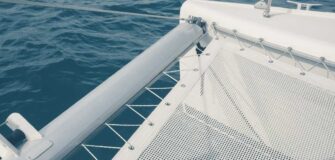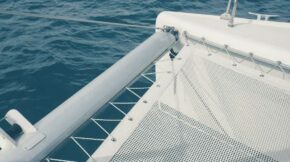14 Scary and Lesser Known Facts About Cruise Ships
Share
At their finest, cruise ships are paradisiacal wonderlands packed with intriguing individuals from different walks of life, enormous buffets, and a profusion of activities.
However, the Centers for Disease Prevention and Control, which examines ships for hygiene, has given certain cruise ships a failing rating. Some Ships seem more like nightmare boats than attractive expenditures after reading accounts of spilling sewage, secret morgues, and bedbug infestations.
Hold your breath because we are going to talk about the scariest facts about cruise ships.

1. People Die Aboard Cruise Ships
It may seem ghoulish, but it happens more frequently than you expect. There’s even a site that keeps records of cruise ship deaths and categorizes them by cause.
While natural reasons account for most cruise ship deaths — old age being a typical culprit — the website also includes suicides, incidences of people going overboard, drugs, and even murder.
One cruise ship worker on Reddit claims to observe at least three deaths every month, while Cruise Ship Critic estimates three deaths per week on cruise ships worldwide.
2. All Cruise Ships have Morgues on Board
Legally, cruise ships must carry corpse bags and operate a morgue. The size of the morgue is proportional to the size of the ship.
The crew may have to be inventive if there isn’t enough room. “There were little refrigerators aboard the ships that, from recollection, could accommodate one or two bodies, but the contingency plan was to utilize a walk-in freezer,” one ex-cruise ship staffer explained.
If things became awful, the bodies might be flown back.”
3. Toilets that Overflow is Not Uncommon
Phantomsplit, a Reddit member, described why it’s not uncommon for a cruise ship bathroom to overflow. On the plus side, most of these errors may be avoided with common sense and care.
“You’d be surprised what people would flush down the toilet,” wrote Phantomsplit.
“Pool noodles, t-shirts, shoes, and everything people don’t want to bring with them when they leave.” Vacuum flush systems are typically used on cruise liners.
These are incredibly efficient yet quite sensitive. Everyone above and below your room can use the restrooms with a tampon or condom. The engine crew then must start busting out black water pipelines and pulling open pumps to discover [the perpetrator].”
4. A Typical Cruise Ship Generates About 140,000 and 210,000 Gallons of Sewage Every Week
According to Quartz, while many cruise lines have excellent wastewater treatment systems, the EPA estimates that a “3,000-person cruise ship dumps 150,000 gallons of sewage into the ocean every week.”
According to a 2014 estimate by the environmental organization Friends of the Earth, it amounts to more than 1 billion gallons of sewage every year that ends up in the ocean, where germs thrive and harm both people and marine life.
5. The Majority of Cruise Ships Harm the Environment
Despite many cruise lines’ efforts to implement more environmentally friendly procedures, cruise ships continue to harm the waters.
They frequently pour toxic bilge water into the ocean, emit the same sulfur dioxide emissions as 13.1 million automobiles in a day, and are “threatening global climate and human health,” according to Daniel Rieger, a researcher at the German environmental organization NABU.
NABU has also discovered that air quality aboard cruise ships can be up to 20 times worse than in a congested city center.
6. Fires and Explosions Can and Have Occurred
According to a recent analysis by research firm G.P. Wild, roughly 60 people are wounded aboard cruise ships each year due to “operational incidents,” which can vary from minor fires on board to real explosions, collisions, and ships sinking or being stranded.
According to CLIA, over 28 million persons cruised in 2018, implying that these injuries affect 0.0002 percent of passengers.
7. A Ship Sinking is Extremely Likely
From 1979 through 2013, scores of passenger ships sank, according to cruise aficionado Robert A. Klein, who founded the website Cruise Junkie. According to the New York Times, just 16 cruise ships sank between 1980 and 2012.
The Costa Concordia sinking in 2012 was one of the largest in recent history, making global headlines. There were 32 casualties among the 4,200 passengers and personnel on board.
8. Ships Are More Prone to Becoming Stranded
Though cruise vacations are designed to be relaxing, the voyage is not always easy. From 1972 through 2011, 98 cruise ships ran aground, according to Klein’s estimates.
The Viking Sky cruise liner got into engine issues off the coast of Norway in March 2019, leaving over 1,300 people stranded.
According to the Associated Press, the ship experienced problems owing to the area’s high winds and turbulent waters. Over 400 passengers had to be saved from the boat, with 28 taken to the hospital.
9. It Isn't Easy to Keep Food Fresh
Journey ships must feed thousands of passengers numerous times daily, using food stockpiled on board for the cruise. In December 2017, over 200 guests aboard the Ovation of the Seas cruise ship were unwell after indulging in the “bottomless brunch,” while a startling 332 Royal Caribbean customers became ill.
According to data from the Centers for Disease Control and Prevention, about 129,678 cruise ship passengers became ill with a gastrointestinal disease between 2008 and 2014.
10. Since 2000, Around 300 passengers have gone Overboard on Cruise Ships and Ferries
According to G.P. Wild’s 2016 research for the Cruise Lines International Association, around 19 individuals per year go overboard while aboard a cruise ship or ferry. Overboard accidents claimed the lives of eight people between 2009 and 2016.
11. Cruise ships are not immune to crime
The cruise business is not immune to criminality. “There is a dark side to what might happen aboard a cruise ship,” writes Joyce Gleeson-Adamidis, author of the “Under the Captain’s Table” fiction series. Crime on cruise ships is uncommon but not unheard of, ranging from minor brawls to outright robbery.
There were 62 recorded sexual assaults on cruise ships in 2016 alone (out of 92 total alleged offenses); NPR’s Eric Weiner highlighted that, according to FBI data, around 16% of all homicides and 7% of sexual assaults onboard cruise ships result in convictions or plea deals.
12. Real-life pirate attacks
Pirate assaults, while uncommon, do occur. The “Spirit” of Seabourn Cruise Lines, with 150 people on board, escaped an attack by armed Somali pirates in 2005.
According to the International Maritime Bureau’s Piracy Reporting Center, pirates assaulted 214 boats off the coast of Somalia in 2009, resulting in 47 hijackings. Fortunately, none of them were cruise ships. To avert a suspected pirate danger, passengers on the Sea Princess leaving from Sydney were put to a 10-day dusk-till-dawn blackout in 2017.
13. Bedbugs and other pests are frequently seen on board
“What was intended to be a nice holiday turned into a horror!” After spotting bedbugs on a cruise in 2016, Cruise Critic user gordon046 posted. Bedbugs aren’t always present due to a cruise’s uncleanliness or neglect, but they do occur.
Vance Gulliksen, a Carnival Cruise Lines representative, said, “Bedbugs are frequently carried on board via visitors’ handbags or luggage.”
14. When Cruise Ships lose electricity, the sewage system suffers
Raw sewage has taken over ships on several occasions. In February 2013, the Carnival Triumph cruise liner notoriously caught fire and lost power in the Gulf of Mexico.
Passengers were treated to raw sewage for five days (the plumbing system failed), prompting the media to dub the disaster “The Poop Cruise.”
The ship’s 3,143 passengers reported a lack of electricity, a lack of water, depleting food supplies, and “sewage trickling down the walls and flooring.” The Triumph was eventually transported to Mobile, Alabama. A month later, guests on the Carnival Dream cruise ship suffered the same fate.















